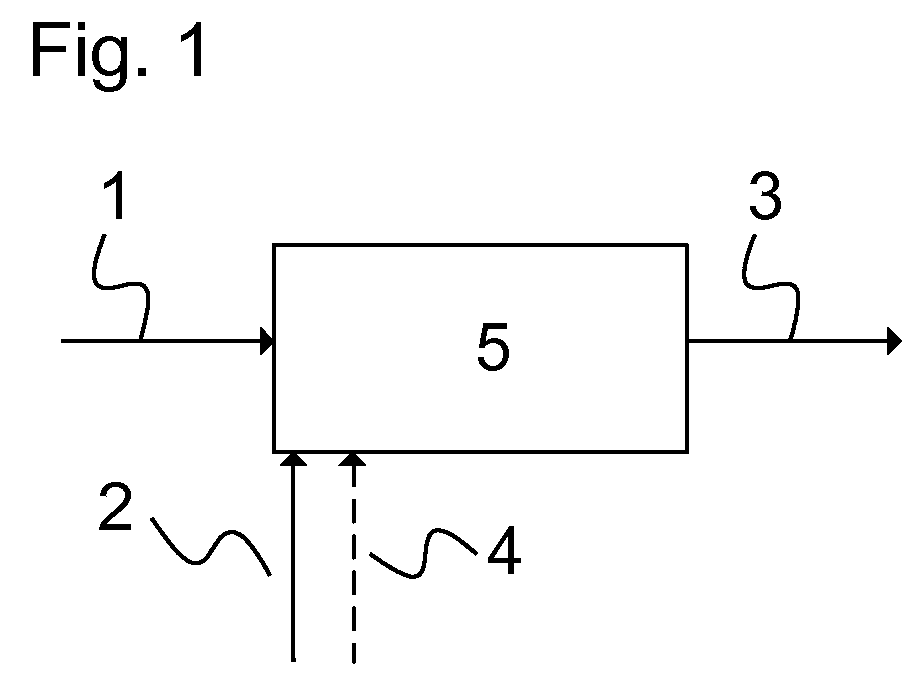Combined waste gas treatment of waste gas streams containing ammonia and nitrogen oxides in industrial plants
a technology of ammonia and nitrogen oxides and waste gas streams, which is applied in the direction of chemistry apparatus and processes, separation processes, dispersed particle separation, etc., can solve the problems of waste gas flows that cannot be discharged into the sewer system without further action, increase of carbon dioxide emissions of the plant, and waste water flows that cannot be discharged into the sewer system
- Summary
- Abstract
- Description
- Claims
- Application Information
AI Technical Summary
Benefits of technology
Problems solved by technology
Method used
Image
Examples
Embodiment Construction
[0024]The described ammonia-containing waste gas flow which is mixed with the nitrogen oxide-containing waste gas flow may contain additional lower alkanes and / or hydrogen and / or oxygen.
[0025]In an advantageous embodiment of the process, the ammonia concentration is adjusted hyperstoichiometrically to the nitrogen oxide concentration in the waste gas flows to be mixed so that the conversion into nitrogen and water takes place without addition of any other components.
[0026]In another optional embodiment of the invention, a reducing agent selected from a group comprising ammonia, aqueous ammonia and urea solution is additionally injected into the mixed flows of ammonia-containing waste gas and nitrogen oxide-containing waste gas.
[0027]In a further embodiment of the invention, a selective non-catalytic reduction is carried out first, which is followed by a selective catalytic reduction.
[0028]The catalyst for the selective catalytic reduction is preferably selected from a group comprisi...
PUM
 Login to View More
Login to View More Abstract
Description
Claims
Application Information
 Login to View More
Login to View More - R&D
- Intellectual Property
- Life Sciences
- Materials
- Tech Scout
- Unparalleled Data Quality
- Higher Quality Content
- 60% Fewer Hallucinations
Browse by: Latest US Patents, China's latest patents, Technical Efficacy Thesaurus, Application Domain, Technology Topic, Popular Technical Reports.
© 2025 PatSnap. All rights reserved.Legal|Privacy policy|Modern Slavery Act Transparency Statement|Sitemap|About US| Contact US: help@patsnap.com



